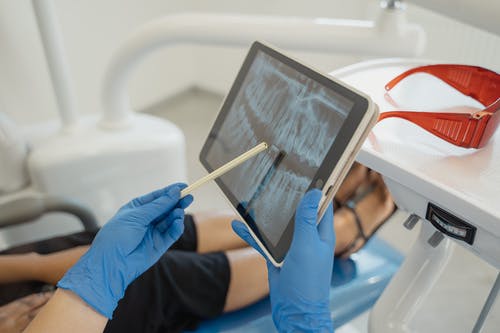
Facing a Tooth Extraction? Here’s What You Need to Know
Thanks to advancements in the field of dentistry, the need for tooth extractions has decreased dramatically over the past decade. Dental experts today will attempt to save even the most severely damaged teeth instead of pulling them out. However, there are still times when a tooth extraction is required. If your dentist has suggested removing one of your teeth, and you’re concerned about what to expect from the operation and its healing and aftercare, keep reading.
An Overview of the Tooth Extraction Procedure
Tooth removal is a common surgical treatment that usually takes up to an hour to complete. The procedure for removing a tooth consists of the following steps:
Anesthesia
First, your dentist will give you anesthetic to put you at ease while they work. The dentist may opt to use intravenous sedation if you are likely to be excessively distressed, fearful, or hesitant during dental procedures.
Extraction of the Tooth
As soon as you are completely loosened up, your dentist will use an “elevator” to break the connections between your tooth, gums, and jawbone. After that, they will use a second elevator that functions like a lever to move the tooth in its socket. To finish, your dentist will utilize forceps and extract your tooth safely by carefully pushing outward on the tooth in a controlled way.
Socket Cleaning
After the tooth has been extracted, your dentist will clean the socket and put pressure on it with a clean gauze pad to stop the bleeding. Biting over the socket for some time helps produce a healthy clot, which eventually turns into bone and fills the socket.
Aftercare Treatment
During recovery, the main goal is to keep the blood clot in place. If the clot moves, it can lead to a painful condition called a dry socket. To avoid this complication, your dentist will put pressure on the wound after the extraction to make sure the clot begins forming. Remember, follow your dentist’s aftercare instructions, eat soft foods, and refrain from using a straw for a minimum of two weeks following your surgery so that the blood clot your mouth utilizes to fix the area doesn’t get dislodged.
You can control swelling by putting ice packs on your face and taking pain relievers. A lot of dentists want you to come back to check on your oral health, especially after surgery, to ensure that no problem will arise. Meanwhile, if you want to enhance the look and function of your teeth after you’ve recovered from tooth extraction, Invisalign clear aligners are an option to consider.
The Importance of Preventive Dental Care to Avoid Tooth Extraction
Keeping your teeth and gums healthy and warding off the need for tooth extraction needs regular preventive oral care. The early warning signs of dental problems can be identified and effectively treated at regularly scheduled dental examinations and cleanings. Brushing twice a day and flossing are just two examples of good dental care routines that can reduce the risk of dental problems.
A balanced diet and reducing sweet or acidic foods and drinks can also aid in protecting the teeth. Without proper treatment, oral issues can spread to the point where tooth removal is the only choice. To learn more about the importance of preventive oral care to avoid tooth extraction, you can talk to your dentist about it.
Conclusion
Tooth removals are sometimes necessary, and knowing what to expect during and after the surgical procedure can alleviate your worries and help you make informed decisions. The procedure usually takes minimal time, and aftercare treatment is vital to ensure proper healing. Regular preventive dental care is also crucial in preventing the need for tooth extraction, and good oral hygiene habits can help protect against dental problems. Remember, caring for your teeth can save you pain, inconvenience, and financial cost in the future.


